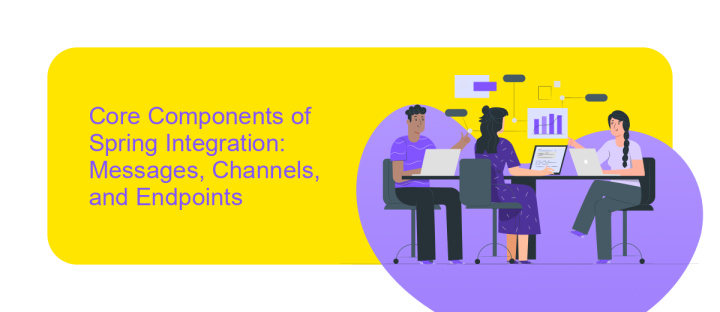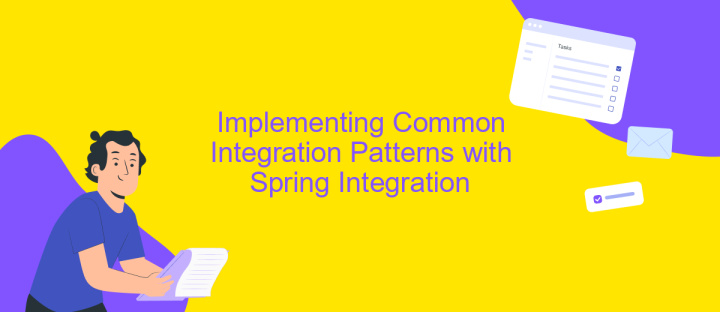Spring Integration API
Spring Integration API is a powerful framework that facilitates the development of enterprise integration solutions. By providing a set of lightweight, extensible components, it enables seamless communication between various systems and applications. With its support for message-driven architectures and a wide range of adapters, Spring Integration simplifies complex integration tasks, making it an ideal choice for developers looking to enhance system interoperability and scalability.
Introduction to Spring Integration and its Benefits
Spring Integration is a powerful framework that extends the capabilities of the Spring framework to support enterprise integration patterns. It provides a robust platform for building distributed systems and microservices by facilitating seamless communication between different applications and services. With its comprehensive set of adapters and components, Spring Integration simplifies the process of connecting disparate systems, allowing developers to focus on business logic rather than integration concerns.
- Decouples components, enabling easier maintenance and scalability.
- Supports a wide range of protocols and data formats, enhancing flexibility.
- Facilitates asynchronous messaging, improving system responsiveness.
- Leverages Spring's dependency injection, promoting clean and testable code.
- Offers comprehensive monitoring and management tools, ensuring reliability.
By utilizing Spring Integration, organizations can achieve a more agile and responsive IT infrastructure. The framework's ability to handle complex integration scenarios with ease makes it an indispensable tool for modern software development. As businesses continue to evolve in a rapidly changing technological landscape, the benefits of adopting Spring Integration become increasingly evident, making it a strategic choice for companies aiming to enhance their operational efficiency and innovation capabilities.
Core Components of Spring Integration: Messages, Channels, and Endpoints

Spring Integration is centered around three core components: Messages, Channels, and Endpoints. Messages are the carriers of data, encapsulating the payload and headers necessary for processing. They serve as the fundamental data structure, enabling seamless data flow within the integration process. Channels act as conduits for these messages, facilitating communication between various components. By decoupling message producers from consumers, channels provide flexibility and scalability, allowing messages to be buffered, prioritized, or transformed as needed.
Endpoints are the processing units that interact with channels to send or receive messages. They can be configured as inbound or outbound, depending on their role in the message flow. While Spring Integration provides robust tools for configuring these components, services like ApiX-Drive can enhance integration capabilities by offering pre-built connectors and automation features. This allows developers to streamline the integration process, reducing the need for extensive custom coding and enabling quicker deployment of integration solutions. By leveraging these core components, Spring Integration facilitates efficient and scalable integration architectures.
Implementing Common Integration Patterns with Spring Integration

Spring Integration provides a robust framework for implementing common integration patterns, facilitating seamless communication between disparate systems. These patterns help in managing complex enterprise integration scenarios by offering pre-built components and configurations. By leveraging Spring Integration, developers can focus on business logic rather than the intricacies of system integration.
- Message Channel: Acts as a conduit for messages, enabling asynchronous communication between components.
- Message Endpoint: Processes incoming messages, transforming or routing them as required.
- Message Transformer: Converts messages from one format to another, ensuring compatibility between systems.
- Message Router: Directs messages to appropriate channels based on predefined criteria.
- Message Filter: Evaluates messages and decides whether they should be processed further.
By utilizing these integration patterns, Spring Integration simplifies the development process, promoting scalability and maintainability. It abstracts the complexity of system interactions, allowing developers to build efficient and resilient applications. With its comprehensive support for various protocols and data formats, Spring Integration is a valuable tool for any enterprise looking to streamline its integration processes.
Advanced Concepts: Error Handling, Monitoring, and Testing

In Spring Integration, advanced concepts such as error handling, monitoring, and testing are crucial for building robust applications. Error handling involves defining strategies to manage exceptions and failures effectively. This can be achieved by configuring error channels, implementing retry mechanisms, and using error handlers to ensure graceful recovery and logging of issues.
Monitoring in Spring Integration is essential for maintaining system health and performance. It involves tracking message flow, system metrics, and application logs to identify bottlenecks and potential issues. Tools like Spring Boot Actuator and custom monitoring solutions can be integrated to provide insights into the application's behavior and performance.
- Error channels for centralized exception management
- Retry mechanisms for transient failures
- Spring Boot Actuator for real-time monitoring
- JUnit and Mockito for testing integration flows
Testing integration flows is vital to ensure that components interact as expected. Utilizing frameworks like JUnit and Mockito allows developers to create unit and integration tests that validate message processing and system behavior. By incorporating these advanced concepts, developers can enhance the reliability and maintainability of their Spring Integration applications.
Real-world Use Cases and Best Practices
Spring Integration API is widely used in real-world applications to streamline complex enterprise integration patterns. One common use case is integrating disparate systems within an organization, such as connecting CRM systems with ERP solutions to ensure seamless data flow. This integration facilitates real-time data synchronization, enhancing operational efficiency and decision-making. Another practical application is in building event-driven architectures, where Spring Integration helps manage message routing and transformation, enabling scalable and responsive systems.
When implementing these integrations, adhering to best practices is crucial. Start by designing modular and reusable components to simplify maintenance and scalability. Utilize message channels effectively to decouple producers and consumers, promoting flexibility. Additionally, consider leveraging services like ApiX-Drive, which can automate the integration process, reducing manual effort and minimizing errors. By following these practices, you can build robust and efficient integration solutions that meet the dynamic needs of modern enterprises.
FAQ
What is Spring Integration API used for?
How does Spring Integration handle message routing?
Can Spring Integration be used with cloud services?
What are some common components of Spring Integration?
How can automation be enhanced using Spring Integration?
Do you want to achieve your goals in business, career and life faster and better? Do it with ApiX-Drive – a tool that will remove a significant part of the routine from workflows and free up additional time to achieve your goals. Test the capabilities of Apix-Drive for free – see for yourself the effectiveness of the tool.

